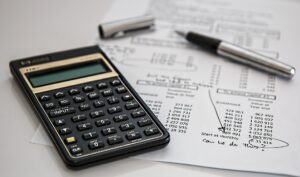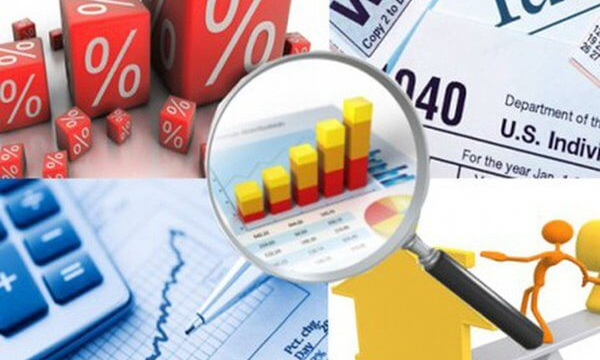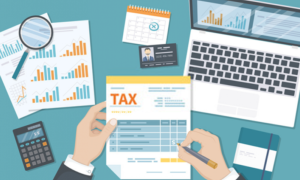Financial reports are indispensable tools in business management, providing comprehensive insights into a company’s financial position and operating performance. From the balance sheet, and income statement, to the cash flow statement, each document plays a crucial role in assessing financial health. This article will provide a detailed guide on how to prepare and analyze financial reports, helping businesses master these essential tools for effective management and sustainable growth.
What is a Financial Report?
Definition and Role of Financial Reports
A financial report (Báo cáo tài chính – BCTC) is a crucial document that comprehensively reflects a company’s financial position and operating performance over a specific accounting period. It includes essential information such as assets, liabilities, equity, revenue, expenses, and profit. The role of financial reports extends beyond internal resource management. They also provide transparent information to stakeholders such as investors, banks, and tax authorities. These reports serve as a foundation for making strategic business decisions and ensuring financial transparency and compliance.
Classification of Financial Reports
Financial reports are generally classified into two main types:
- Standalone Financial Reports – Used by independent companies to present their individual financial performance and position.
- Consolidated Financial Reports – Used by corporate groups to reflect the overall financial situation of the parent company and its subsidiaries.
Each type serves different purposes, meeting both internal management and legal compliance requirements.
Key Components of a Financial Report
A complete financial report typically consists of:
- Balance Sheet – Displays the company’s assets and liabilities, giving insight into its financial position.
- Income Statement – Reflects revenues, expenses, and net profit over a specific period.
- Cash Flow Statement – Provides details on cash inflows and outflows, helping track liquidity.
- Notes to Financial Statements – Offers detailed explanations of financial data and accounting policies used in the reports.
The Importance of Financial Reports in Business Management
Financial reports are critical tools for assessing business performance, managing cash flow, and ensuring legal compliance. Business leaders use financial reports to identify strengths and weaknesses, formulate strategies, and make informed decisions. Moreover, transparent financial reporting builds trust among shareholders, investors, and business partners, particularly in fundraising efforts or business expansion plans.
How to Prepare a Standard Financial Report
Preparing Accounting Data and Documents
To create an accurate financial report (BCTC), businesses must collect and verify all relevant accounting documents, including invoices, receipts, contracts, and accounting records. Ensuring that financial data accurately reflects the company’s financial position and business activities is crucial. Additionally, businesses should cross-check data between detailed and summarized accounts to detect and correct discrepancies promptly. Proper preparation of financial data is essential to ensure that the financial report meets both legal and management requirements.
Steps to Prepare a Financial Report
The financial reporting process consists of three key steps:
- Collect Accounting Data – Gather information from general ledgers and subsidiary ledgers to compile balance sheets.
- Process and Classify Financial Data – Organize data into categories such as assets, liabilities, and equity for accurate financial representation.
- Prepare the Financial Report – Create the financial statement following Vietnamese Accounting Standards (VAS) or international standards, ensuring accuracy and compliance with regulations.
This process requires precision and strict adherence to legal accounting principles.
Key Considerations When Preparing an Income Statement
The income statement must clearly present the company’s revenue, expenses, and net profit for a given period. When preparing the report, it is important to:
- Classify different income sources, including sales revenue, service income, and other earnings.
- Accurately record expenses, such as cost of goods sold (COGS), administrative expenses, and financial costs.
Proper classification ensures that the income statement accurately reflects business performance and financial efficiency.
Guidelines for Preparing an Accurate Balance Sheet
The balance sheet is a critical tool that shows a company’s assets, liabilities, and equity at a specific point in time. When preparing the balance sheet:
- Assets should be categorized into current and non-current assets.
- Liabilities should be divided into short-term and long-term liabilities.
- Ensure that total assets equal total liabilities and equity to maintain financial balance.
An accurately prepared balance sheet helps businesses assess their current financial position and develop appropriate strategic plans.
How to Analyze Financial Reports?
The Importance of Financial Report Analysis
Financial report analysis is an essential tool for businesses to gain a clear understanding of their financial position and operational performance. This analysis helps identify strengths and weaknesses, allowing businesses to formulate appropriate strategies for improvement. Additionally, financial analysis aids in detecting potential risks, ensuring financial stability and long-term growth.
How to Read an Income Statement
The income statement provides detailed information on revenues, expenses, and profits over a specific period. Key indicators to focus on include:
- Gross profit – Indicates profitability before deducting operating expenses.
- Operating profit – Reflects the company’s earnings from core business activities.
- Net profit – Shows the final profit after all costs, taxes, and other deductions.
By analyzing trends in these indicators across different periods, businesses can assess operational efficiency and detect growth patterns.
Analyzing the Balance Sheet
The balance sheet represents a company’s financial structure, including assets, liabilities, and equity. Evaluating the balance sheet helps determine:
- Liquidity and solvency – The company’s ability to meet short-term and long-term financial obligations.
- Financial independence – Measured by the debt-to-equity ratio, which indicates the balance between external financing and internal capital.
- Capital utilization efficiency – How effectively the company is using its financial resources to generate returns.
Key financial ratios such as the current ratio (current assets divided by current liabilities) and debt-to-equity ratio are crucial tools for assessing financial health.
Assessing Cash Flow Through the Cash Flow Statement
The cash flow statement tracks the movement of cash in and out of a business. Analyzing cash flows from operating, investing, and financing activities helps evaluate:
- Cash management capabilities – Whether the company can maintain a stable cash balance.
- Liquidity levels – A positive cash flow from operations indicates financial stability, while a negative cash flow signals potential financial challenges.
A positive operating cash flow suggests a solid financial foundation, whereas negative cash flow trends may require corrective action to improve liquidity and financial management.
Reporting Periods and Deadlines for Financial Statements
Financial Reporting Periods
Financial statements are typically prepared based on the fiscal year, which ends on December 31 or another date if approved by the tax authorities. Additionally, businesses may prepare interim financial statements on a quarterly or semi-annual basis to meet internal management needs and investor reporting requirements. Regular financial reporting ensures that businesses closely monitor their financial position and comply with tax obligations on time.
Annual Financial Statement Submission Deadlines
Under current regulations, the deadline for submitting annual financial statements is 90 days from the end of the fiscal year. Businesses with foreign investment or those operating in regulated industries must adhere to specific deadlines outlined in the Accounting Law and related legal documents. Timely submission helps businesses avoid administrative penalties.
Financial Reporting Requirements for Specialized Businesses
- Listed companies, parent companies, or corporate groups must prepare consolidated financial statements, reflecting the activities of all subsidiary entities.
- Banks, insurance companies, and other financial institutions are subject to industry-specific audit and disclosure requirements in addition to standard financial reporting.
Penalties for Late Submission of Financial Statements
Failure to submit financial statements on time can result in administrative fines ranging from VND 5 to 30 million, depending on the extent of the delay and severity of the violation. Moreover, delayed submissions can harm a company’s reputation, particularly with investors and business partners, potentially affecting future funding opportunities and business relationships.
Professional Financial Reporting Support Services
Benefits of Financial Reporting Support Services
Utilizing professional financial reporting services helps businesses save time and ensures that reports comply with accounting standards. Experienced professionals assist with data reconciliation, tax reporting, and financial statement preparation, allowing businesses to focus on their core operations without worrying about legal procedures.
Legal Compliance and Issue Resolution
A professional service not only assists in preparing financial reports but also provides support in resolving legal issues, such as:
- Correcting reporting errors
- Handling disputes with tax authorities
- Completing audit documentation
With a team of legal and financial experts, businesses can ensure full compliance with regulatory requirements.
Optimizing Time and Costs with Professional Services
Accounting professionals help streamline processes, ensuring fast and accurate financial reporting while meeting submission deadlines. This reduces unexpected costs and enhances financial transparency.
Why Accurate Financial Reporting Matters
Financial statements are not just legal documents; they are strategic tools that enable businesses to:
- Monitor financial health
- Manage resources effectively
- Build credibility with investors and partners
A well-prepared and properly analyzed financial report allows businesses to make informed strategic decisions. To ensure quality and compliance, companies should consider professional support services, which help save time, reduce costs, and mitigate risks in financial reporting and compliance processes.
For any inquiries, contact Wacontre Accounting Services via Hotline: (028) 3820 1213 or email info@wacontre.com for prompt assistance. With a team of experienced professionals, Wacontre is committed to providing dedicated and efficient service. (For Japanese clients, please contact Hotline: (050) 5534 5505).






